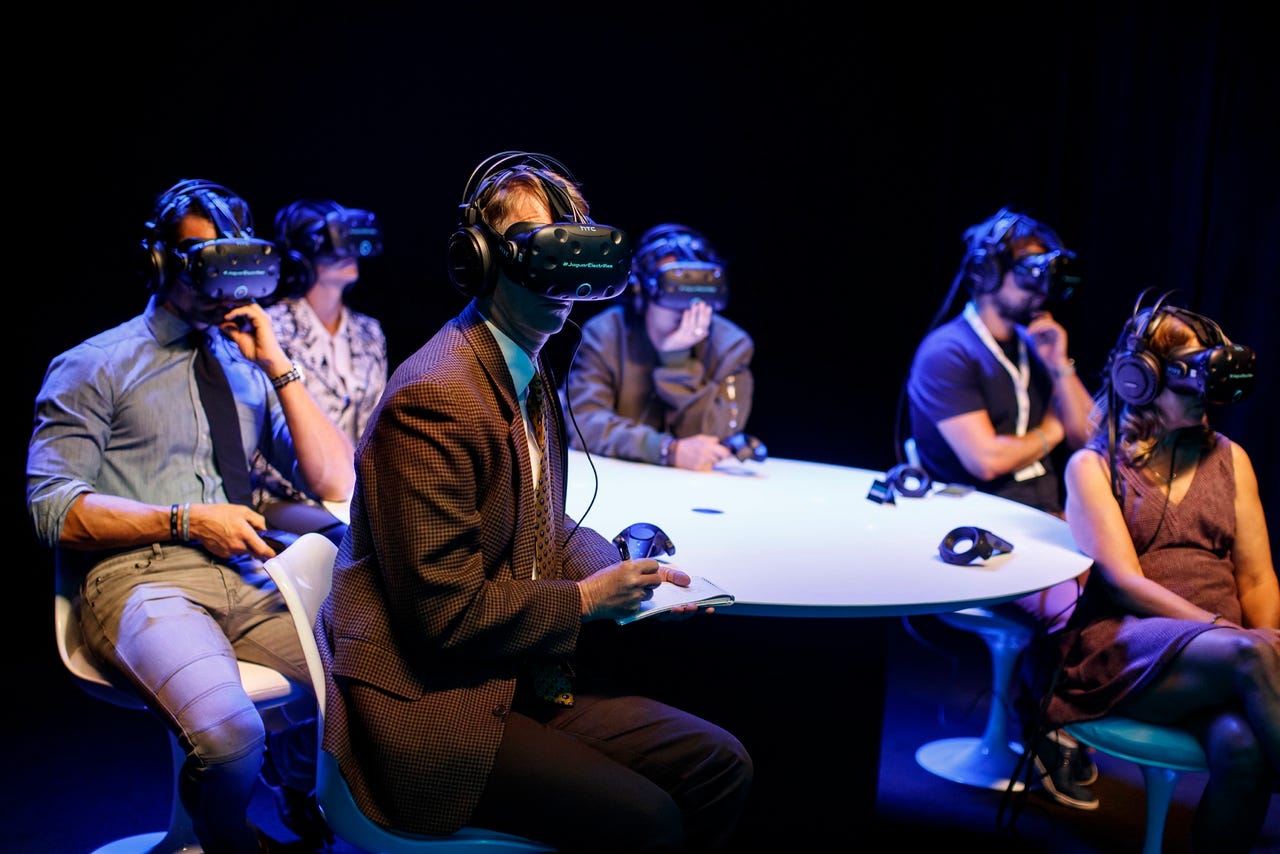Jaguar uses VR to unveil its first electric vehicle

Jaguar has unveiled its first electric vehicle, partnering with HTC and Dell as well as creative agencies ReWind and Imagination to show off the car via virtual reality (VR).
In both Los Angeles and London, more than 300 guests used HTC Vive headsets to put themselves inside the concept car and interact live with other participants.
According to Ian Callum, director of design at Jaguar, the luxury vehicle manufacturer's VR unveiling pushed technology boundaries.
"[It also] captures the hi-tech essence of the concept car," Callum said. "We only have one concept car, and it is in LA for the reveal. For the first time, VR has allowed us share it across the globe in the most immersive way possible."
Guests "sat" on the concept's virtual seats, had a 360-degree view of Venice Beach in California as the concept was built piece by piece around them, and saw the I-PACE car race towards them across a virtual desert.
The VR experience also allowed participants to sit in the front and rear of the car.

"The Jaguar I-PACE concept, designed and introduced with VR, reinforces the incredible innovation that's possible ... with VR technologies. We are excited about the potential these technologies have to ultimately transform industries," Rahul Tikoo, vice president and general manager for Dell Precision, added.
Jaguar's new I-PACE concept car -- scheduled to be on the road in 2018 -- will be capable of reaching a full charge in just over two hours, which will see it deliver more than 220 miles in range measured on the US EPA test cycle.
A recent study by Yeti LLC, a design and development studio that helps customers improve their product development processes, provided a look at the emerging VR market and noted that 85 percent of those surveyed for the report said they either already have VR projects under way, or will do so within one to two years.
The majority of the respondents also already have at least one VR-capable developer on staff, but recognise they are not yet staffed to handle large VR-related ambitions.
When asked to identify which primary industries they think VR usage will significantly accelerate in the next two years, 84 percent of respondents cited entertainment, 74 percent said education, 63 percent said media, and 60 percent said medical and healthcare, while high-tech was cited by 56 percent, travel by 54 percent, and real estate by 51 percent.
Australian property site realestate.com.au announced the launch of realestate VR last month, a virtual reality property app for Android mobile devices.
Swedish retail giant IKEA also took the leap into the world of VR earlier this year, launching its Virtual Reality Kitchen IKEA VR experience in a bid to transform the way people shop.
Released on Valve's game distribution platform Steam in partnership with HTC, the pilot allows customers to try new kitchen solutions before purchasing them.
"Australians are known for embracing the latest technology and innovations, so virtual reality has the potential to transform the way people interact with our products in the home," Tim Prevade, range manager for IKEA Australia, said. "We look forward to hearing our customers' feedback on the experience as we continue to explore this space in the future."
In March, Telsyte predicted the popularity of VR in Australia to accelerate this year, and the sale of 110,000 units in 2016 to kick off annual growth of more than 500,000 headsets per annum by 2020, with video game enthusiasts expected to lead the trend.
"Strong market growth will come in 2017 and 2018 as manufacturers ramp up production and more 'must have' use cases emerge," Telsyte managing director Foad Fadaghi said at the time. "The strongest pent-up demand is coming from gamers, who clearly see VR as the next frontier in immersive entertainment."